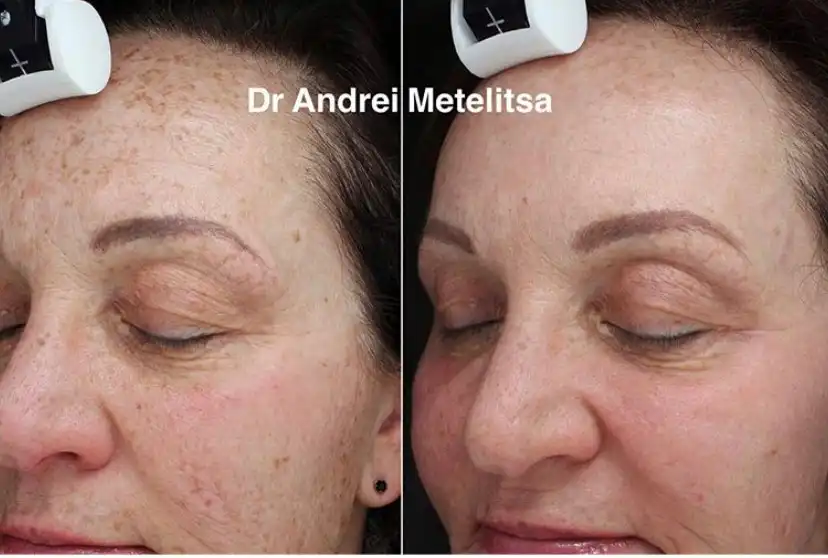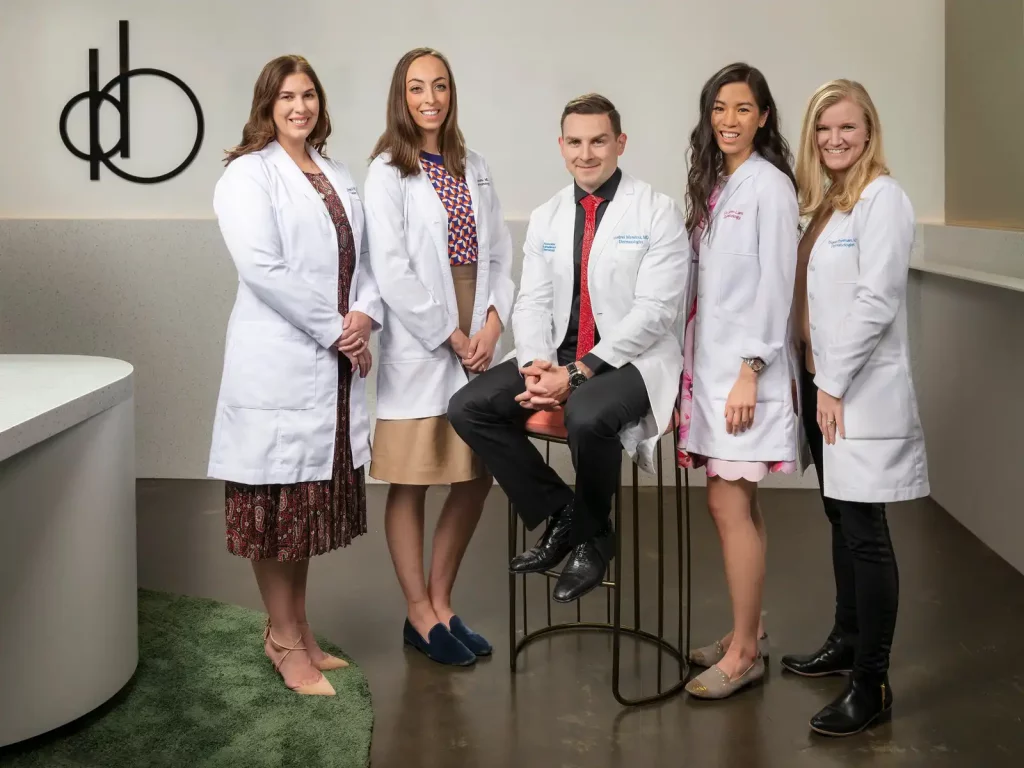Deciding between microneedling and laser skin resurfacing can feel a bit like choosing between a latte and an espresso – both can give you that rejuvenating boost, but each has its own flavour. Microneedling is like your go-to latte: gentle, with a quick pick-me-up, perfect for a subtle glow. Laser resurfacing? That's your bold espresso shot, more intense but with results that really wake up your skin. Whichever route you're considering, we'll walk you through the ins and outs of each option, helping you choose the path that's just right for your skin and your beauty goals.
What Is Microneedling?

Microneedling, or collagen induction therapy, is a minimally invasive treatment that utilizes a specialized device with fine needles. This device creates tiny punctures in the top layer of the skin, which triggers the body's healing response, stimulating collagen and elastin production. This process helps to rejuvenate the skin, making it an effective treatment for reducing the appearance of scars, fine lines, and improving overall skin texture and firmness.
Microneedling Pros
Minimal Recovery Time
One of the biggest advantages of microneedling is its minimal downtime. Patients typically experience only minor redness and irritation for a few days post-treatment, making it a convenient option for those with busy lifestyles.
Broad Compatibility
Microneedling is safe for a variety of skin types and colours, presenting a lower risk of pigmentation issues post-treatment, which can be a concern with some laser procedures, particularly for darker skin tones.
Versatility
The procedure can be tailored to different skin issues and areas, not just the face but also the neck, décolletage, and even hands, making it a versatile option for comprehensive skin care.
Enhanced Absorption of Skin Care Products
The micro-channels created by the needles can enhance the penetration and effectiveness of topical skin care treatments, providing an added benefit to your skin care regimen.
Microneedling Cons
Subtle Results
While effective, microneedling often requires multiple sessions to achieve significant results, particularly for more pronounced skin concerns.
Temporary Side Effects
Common side effects include redness, swelling, and discomfort at the treatment site, typically subsiding within a few days.
Infection Risk
There's a slight risk of infection, particularly if the treated area isn't properly cared for post-procedure, emphasizing the need to follow aftercare instructions closely.
What is Laser Skin Resurfacing?

Laser skin resurfacing utilizes concentrated beams of light to remove damaged skin cells layer by layer. The precision of the laser allows for targeted treatment of wrinkles, sun damage, scars, and other skin irregularities. The heat from the laser also stimulates collagen production, promoting the growth of new, healthier skin cells.
Laser Skin Resurfacing Pros
Immediate and Noticeable Results
Laser treatments often provide more immediate and noticeable improvements than microneedling, especially for deeper wrinkles and more severe skin damage.
Customizable Treatments
Laser technology offers various settings and wavelengths customized to address specific skin concerns and types, providing a tailored approach to skin rejuvenation.
Long-Term Benefits
The results of laser treatment can be long-lasting, with many patients enjoying the benefits for several years, depending on the type of laser used and the individual's skin condition.
Deep Tissue Stimulation
Lasers can penetrate deeper into the skin than microneedling, offering a more intense stimulation of collagen and elastin production.
Laser Skin Resurfacing Cons
Extended Downtime
Recovery from laser resurfacing can be lengthy, especially for more aggressive treatments, with some patients requiring several weeks for complete healing.
Higher Risk of Side Effects
Laser treatments carry a higher risk of side effects, including redness, swelling, and, in rare cases, blistering or changes in skin pigmentation, particularly for those with darker skin tones.
Cost
Laser treatments can be more expensive than microneedling, particularly if multiple sessions are required for optimal results.
Microneedling vs. Laser for Acne Scars
Acne scarring is one of the most common skin concerns that can be addressed through microneedling and laser treatments at Beacon Dermatology.
If you have acne scars and are trying to decide between CO2 laser vs microneedling, rest assured that both of these skin resurfacing treatments will stimulate collagen production and reduce the appearance of your acne scars. Since microneedling and CO2 laser therapy are both effective, we recommend considering scar types, your budget, and your desired level of invasiveness before making your final decision.
Laser Resurfacing vs. Microneedling
Microneedling is generally more suitable for ice pick scars, rolling scars, and mild to moderate acne scars. Why? Because the mechanisms of action behind microneedling involves puncturing the skin and stimulating collagen and elastin production, which can fill in the depressions caused by these types of acne scars. Microneedling is also ideal for clients with no time for downtime.
Though microneedling is a great option for reducing the appearance of acne scars, including among those with darker skin tones, please keep in mind that you should not pursue microneedling if you have taken isotretinoin, a prescription medication used to treat severe acne.
Laser therapy, on the other hand, is often recommended for boxcar scars or other types of severe acne scarring. It offers a more aggressive approach because the powerful beam of light resurfaces your skin, stimulates collagen production, and improves your skin texture. Ablating the topmost skin layers with a laser essentially replaces old, scarred skin tissue with new, healthier tissue. Laser therapy is generally more expensive and may require multiple sessions, so it's important to factor in both cost and time commitment when making your decision.
Which One Should I Choose?
The choice between microneedling and laser skin resurfacing depends on your specific skin concerns, goals, and how much downtime you can afford. Microneedling is ideal for those seeking improvement in skin texture, fine lines, and minor scarring, with minimal downtime. Laser treatment may be more suitable for addressing deeper wrinkles, significant sun damage, and more pronounced skin irregularities, with the understanding that it may require a more extended recovery period.
Can I Use Both at the Same Time?
Both microneedling and CO2 laser are effective treatment methods for addressing skin discoloration, stretch marks, and other common skin concerns. By promoting healthier skin cells, these treatments excel at helping you achieve firmer skin and increased elasticity.
You don’t have to choose between laser resurfacing vs. microneedling if our skincare experts can confirm that a combination of laser resurfacing and microneedling will give you optimal results. In this case, your doctor will create a customized treatment plan for you.
Since your safety is our top priority at Beacon Dermatology, we want you to know that while it's generally not recommended to undergo both treatments simultaneously due to the increased risk of irritation and overexertion of the skin's healing processes, it’s possible for your treatment plan to be spaced out over time so you can maximize the benefits of each without increasing your risk of experiencing unwanted side effects.
If you’re interested in microneedling and laser treatments, please let us know so we can talk to you about this possibility! Please note that the cost will be based on the assessment of your skin goals.
Making Your Decision

Consult with the team at Beacon Dermatology, who can assess your skin type, discuss your concerns, and recommend the most appropriate treatment plan. Whether you choose microneedling, laser skin resurfacing, or a combination of both, we will guide you through the process and create a personalized treatment plan for your needs.